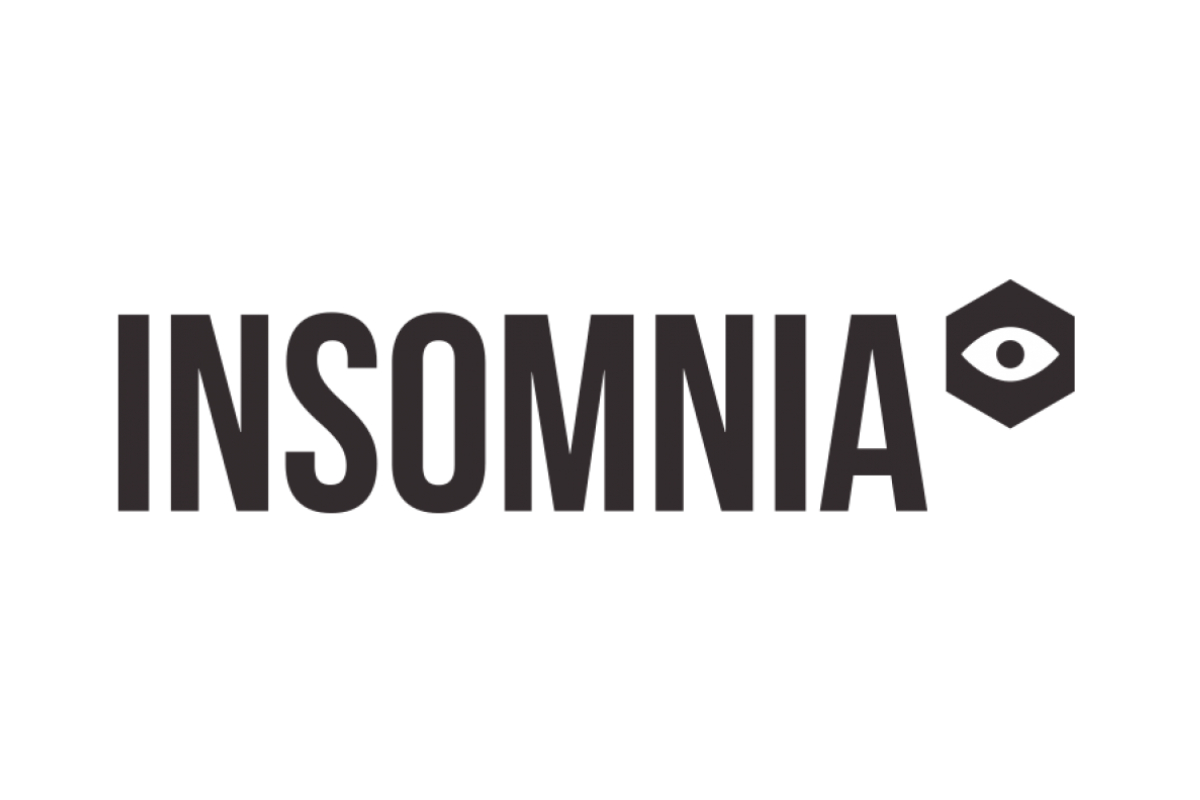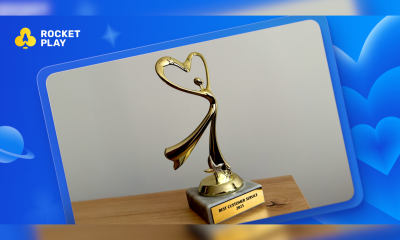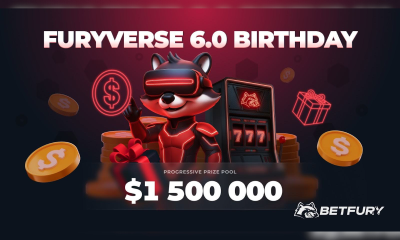Latest News
Insomnia Gaming Festival Organiser ‘Player1 Events’ Acquired by Supernova Capital

Insomnia founder Craig Fletcher to return and join Supernova exec team. Planning underway to relaunch Insomnia Gaming Festival in 2021, subject to COVID restrictions.
Private equity firm Supernova Capital has today announced it has fully acquired Player1 Events from GAME and sets out its vision for holding events in 2021 and beyond.
Craig Fletcher, the founder of Multiplay and the Insomnia Gaming Festival, will return to lead Insomnia operations following the acquisition. Craig will also join Supernova’s executive team and provide the driving force and entrepreneurial spirit behind Supernova’s future plans for live events and esports. All existing P1E staff will be retained as part of the acquisition and will be potentially working on an Insomnia event in 2021 along with future events planned in the UK and internationally in 2022 and beyond.
Craig Fletcher commented, “We’ve seen over the last year that the demand for events has been palpably growing, both as interest in esports has grown dramatically, but also people longing to return to the atmosphere of being at a live event. By relaunching Insomnia, we will take things to a new level, uniting gamers of all ages, and players of all levels to come together at inspiring live events. We hope to be in a position to make announcements on 2021 events soon.”
Paul Wedgwood, Co-Founder & CEO of Supernova said, “Insomnia is an event with global appeal, and we’re excited about the impact Supernova and our partners can make. We’re in an excellent position to help brands develop their own events and communities post-COVID, following a transformative 12 months in the industry. We also look forward to continuing our close relationship with GAME and Belong as we develop new experiences for our own growing community.”
Sarah Hodgson, UK FD of GAME commented: “The Insomnia Gaming Festival is a crucial date on the gaming calendar for bringing gamers together to celebrate the games they love. The event has always had a wide appeal and we look forward to seeing what Craig and the Supernova team can do in the future.”
Powered by WPeMatico
Amusnet
Week 46/2025 slot games releases

Reading Time: 6 minutes
Here are this weeks latest slots releases compiled by European Gaming
Spinomenal has expanded its Demi Gods Series with the launch of its epic new title, Majestic Atlas. Set high above the clouds, Majestic Atlas is a 5×3 game that’s framed within a grand celestial temple inspired by the beauty of ancient Greece. A powerful, atmospheric musical score evokes the might of Atlas and lifts the entertainment to new heights.

GAMOMAT has continued the sweet life of the beloved La Dolce Vita with the highly-anticipated La Dolce Vita 2. This new title picks up the love affair of the original with fresh gameplay, engaging features, and a beautiful new Italian location. Charming Giovanni returns to take centre stage within the bustling Italian village marketplace, where a heartfelt soundtrack creates a joyful atmosphere.

Amusnet has released its latest video slot, Ancient Coins. This captivating release transports players deep into the heart of the jungle, where adventure and ancient treasures meet across 5 reels and 25 fixed paylines. Rich with colour, atmosphere and detail, Ancient Coins is designed for those who seek excitement in every moment of their gameplay.

Promatic has released Apollo’s Garden of Riches – a new 5×3 slot game that combines elegant design, rewarding gameplay and a heartfelt connection to the company’s roots in the Karkonosze Mountains. The Karkonosze region – where Promatic was founded and continues to draw inspiration – is a place of amazing landscapes, legends and rare species.

PG Soft has released its uplifting game, Skylight Wonders. This game welcomes players aboard a hot air balloon traversing across a dreamlike world high above the clouds. There are increasing multipliers and three reel frames that transform winning symbols into Wild symbols.

Amusnet has released its new video slot game, 40 Mystic Gem. This gem-inspired title is set to light up the reels with brilliance, blending vibrant fruit symbols and radiant jewels in a game that captures both style and excitement. Featuring 5 reels and 40 fixed paylines, 40 Mystic Gem brings together a sparkling mix of modern design and timeless gameplay.

Evoplay has released Piggy Bank 3 Pots Bonanza, a vibrant and joyful slot where players can crack the safe for generous wins. With the inclusion of the popular 3 Pots mechanic and several thrilling features, the 5×3, 20-line game offers a colourful world of gold bars, diamonds, and the three titular Piggy Banks for an action-packed adventure.

Tom Horn Gaming invites players to step into a world of emerald fields, leprechauns, and hidden treasures with its latest release, 3 Ribbon Pots. Launched on 11 November, this fast-paced slot delivers a new take on the popular Hold&Win mechanic, adding depth, variety, and smoother gameplay.

SlotMatrix is bringing the fire with the launch of Hula Moolah, an explosive new slot from Powderkeg Studios. Set in a tropical paradise where Tiki gods rule and volcanoes erupt, Hula Moolah turns every spin into a molten-hot chance to win. The game’s centrepiece is the Hold & Spin Feature, ignited when the vibrant Tiki Wilds leap into the volcano.

Reflex Gaming is turning up the heat once again with the launch of 8 Balls of Fire Blazing Bounty, a thrilling sequel to one of the company’s most popular titles. The original 8 Balls of Fire became a breakout hit across multiple channels, and this follow-up brings even more action, jackpots and explosive potential to the reels.

BGaming summons a mystical cat-genie to help players’ wishes come true in the brand-new Golden Paw Hold & Win slot. Golden Paw Hold & Win provides a fresh perspective on the classic Hold and Win gameplay mechanic. The game boasts 1,024 ways to win on every spin, with a variety of five exciting progressive bonus rounds, expanding reels, and a mesmerising leading character.

Inspired Entertainment, Inc. is pleased to announce the launch of Cops ‘n’ Robbers Bigger Big Money Christmas developed by Inspired’s Bell-Fruit game studio. Set on a 3×5 reel set with 10-win lines, Cops ‘n’ Robbers Bigger Big Money Christmas is packed with thrilling features.
developed by Inspired’s Bell-Fruit game studio. Set on a 3×5 reel set with 10-win lines, Cops ‘n’ Robbers Bigger Big Money Christmas is packed with thrilling features.

Inspired Entertainment, Inc., has launched Gold Cash Free Spins Super Wheel , a supercharged evolution of Inspired’s classic hit slot, Gold Cash Free Spins
, a supercharged evolution of Inspired’s classic hit slot, Gold Cash Free Spins . Available across the UK and Malta iGaming markets.
. Available across the UK and Malta iGaming markets.

Thunderkick has launched Pink Elephants Trinity, the third instalment of its mystical franchise, where six bonus game levels unveil a journey towards deep synesthetic immersion. The Swedish supplier has traded the desert landscape and starry sky for an ethereal jungle backdrop, where a tribe of monkeys gather around the Pink Flame for a ritual honouring the Pink Elephants.

Belatra has proudly released Slattors Battle – Orcs vs Elves, a slots saga that puts the fate of the world in players’ hands. Inspired by an ancient rivalry between the radiant Elven kingdoms and the fearsome Orc hordes, Slattors Battle – Orcs vs Elves unfolds on a 5×5 reels battlefield.

Play’n GO presents Rings of Prosperity, a slot rooted in ancient mysticism and the power of celestial guidance. Play’n GO’s Rings of Prosperity draws on the influence of Eastern mythology, placing players under the protection of the Dragon God – a symbol of strength and abundance.

Just Slots, has announced the release of its latest slot title, Book of Abyss. In this dark fantasy adventure, players descend into the realm of Abyss, a fallen queen demoness bound to a cursed diary. Every spin of the reels echoes Abyss’s torment, and when the mystical Book feature opens, players peer into forbidden chapters of her soul.

Playson ups the ante in its electric new release, More Energy Coins: Hold and Win, with an enlarged 5×4 reelset, special Collect Feature and 10,000x Royal Jackpot supercharging the excitement on offer. Inspired by Playson’s data-proven mechanics, the game’s starring Energy Bonus symbol unlocks the Collect Feature if it combines with any Bonus Symbol.

Blueprint Gaming has turned up the heat in its latest release, Lava Lock Jackpot King
has turned up the heat in its latest release, Lava Lock Jackpot King , with the sweltering title leading with a new Volcano feature and a host of refreshed modifiers for an enriched gameplay experience. Pele, the goddess of volcanoes, takes centre stage in the 5×3, 30 payline slot.
, with the sweltering title leading with a new Volcano feature and a host of refreshed modifiers for an enriched gameplay experience. Pele, the goddess of volcanoes, takes centre stage in the 5×3, 30 payline slot.

Gallop into Big Wins with Mustang Hold and Win from Booming Games! Step into the wild and untamed world of Mustang Hold and Win, where the free-spirited mustangs rule the reels. With a 5×3 grid and 25 paylines, this slot delivers an exhilarating experience with stunning visuals of the American wilderness.

BGaming boldly goes where no slot studio has gone before with the release of Star Trek : The Next Generation. The slot honours the legacy of the show, beaming players into a new dimension with an entertainment-first approach that will please Star Trek
: The Next Generation. The slot honours the legacy of the show, beaming players into a new dimension with an entertainment-first approach that will please Star Trek fans and newcomers alike.
fans and newcomers alike.

The post Week 46/2025 slot games releases appeared first on European Gaming Industry News.
Asia
SA Gaming partners with EGT Digital to offer extraordinary gaming experiences

Reading Time: < 1 minute
SA Gaming is delighted to announce our new partner, EGT Digital, one of the largest gaming platforms in Europe. This agreement will see our games available on EGT Digital’s platform.
This collaboration marks an important milestone for both of us as it enhances our brand visibility and allows us to reach a broader audience. This alliance is also bringing elevated gaming experience to players on the platform of EGT Digital.
As one of the fastest-growing brands in Europe, EGT Digital has an extensive network and a comprehensive product portfolio that attract a diverse player base from numerous markets around the world. As players of EGT Digital now have access to our wide range of Live Games, which are certain to attract players – this new partnership certainly fulfills the business objectives of both EGT Digital and SA Gaming.
EGT Digital’s spokesperson commented, “For us at EGT Digital, the priority number 1 is always to give our customers the best gaming experience. That is why we are very pleased to have the opportunity to offer them SA Gaming’s titles, standing out with great thematic diversity, highly engaging mechanics and captivating bonuses. We believe that this partnership will both enrich our platform and enhance the game developer’s reach, while providing players with access to the high-quality gaming content they are looking for.”
As we continue to provide top-notch entertainment, this agreement creates new room for both of us to grow and flourish. We are eager to embark on this journey together and look forward to the infinite possibilities that would deliver exceptional value to all players.
The post SA Gaming partners with EGT Digital to offer extraordinary gaming experiences appeared first on European Gaming Industry News.
Anti-Fraud Innovation of the Year
Frogo Wins “Anti-Fraud Innovation of the Year” at SiGMA Central Europe 2025

Reading Time: < 1 minute
Frogo has won the “Anti-Fraud Innovation of the Year” award at the SiGMA Central Europe B2B Awards 2025. The award recognizes companies that are redefining how businesses approach risk, security and operational transparency.
Unlike traditional systems focused on blocking individual cases of fraud, Frogo’s approach is built around strategic prevention and real-time decision support. The platform helps businesses to understand their data, predict potential risks and act before losses occur. It combines artificial intelligence, behavioral analytics, graph-based forensics and – most importantly – deep industry expertise in a single environment that enables teams to identify fraud patterns and adapt instantly to changing traffic or threat dynamics.
“We’ve always seen fraud prevention as more than a reactive process,” said Volodymyr Todurov, CEO at Frogo. “Our goal is to help companies think strategically about risk, to build systems that recognize patterns, not just red flags. That’s what makes prevention sustainable.”
The SiGMA jury highlighted Frogo’s ability to balance automation with flexibility, allowing companies across sectors such as iGaming, fintech and e-commerce to maintain both security and user trust. Businesses using Frogo can automate complex fraud checks, reduce operational noise and focus on making informed, timely decisions rather than manual investigations.
The post Frogo Wins “Anti-Fraud Innovation of the Year” at SiGMA Central Europe 2025 appeared first on European Gaming Industry News.
-

 Andrew Rhodes5 days ago
Andrew Rhodes5 days agoUK Gambling Commission Concludes Four-part Series on Illegal Online Gambling
-

 Balkans5 days ago
Balkans5 days agoCT Interactive to Participate in BEGE 2025
-

 Latest News5 days ago
Latest News5 days agoBoomerang Partners celebrated Golden Boomerang League winners and engaged booth guests with a gift auction at SiGMA Europe 2025
-

 Apollo’s Garden of Riches5 days ago
Apollo’s Garden of Riches5 days agoPromatic Releases “Apollo’s Garden of Riches”
-

 Latest News5 days ago
Latest News5 days agoRocketPlay wins Best Customer Service at European iGaming Excellence Awards
-

 Amusnet5 days ago
Amusnet5 days agoAmusnet Releases its Latest Video Slot “Ancient Coins”
-

 Chief Strategy Officer at GAMOMAT Development GmbH Sebastian Reddig5 days ago
Chief Strategy Officer at GAMOMAT Development GmbH Sebastian Reddig5 days agoGAMOMAT serves up more sweet life with La Dolce Vita 2
-

 Latest News5 days ago
Latest News5 days agoBetFury Marks Its 6 Years With the Grand $1.5M+ Furyverse 6.0 Celebration









